Asian Carp Swarm South of Chicago As Consensus on Permanent Solution Eludes Nation
New legislative proposal focuses on less expensive, short-term fixes.

By Codi Kozacek
Circle of Blue
Bipartisan legislation proposed by Great Lakes lawmakers last month calls for interim measures to keep Asian carp and other invasive species from entering the lakes through Chicago. But steep price tags and disagreement among interest groups is blocking a long-term solution, according to lawmakers and regional organizations.
The legislation, introduced in the U.S. House of Representatives and the Senate, proposes to strengthen invasive species barriers at the Brandon Road Lock and Dam on the Des Plaines River near Chicago.
It comes more than a year after a major U.S. Army Corps of Engineers study presented proposals—costing at least $US 15 billion—to permanently separate the Great Lakes from the Mississippi River Basin. That idea, which has encountered Congressional resistance, involves closing the hydrological connection created by the Chicago Area Waterway System (CAWS), a 100-mile network of four rivers and two canals that connect Lake Michigan with the Mississippi River. The waterway system is considered the most likely path for invasive species to move between the two major watersheds
“This legislation is the best that we can hope for,” Tim Eder, executive director of the Great Lakes Commission, told Circle of Blue. “It authorizes short-term actions at Brandon road and continues the process—unfortunately we need to go through a process—to reach consensus. This is an appropriate piece of legislation that keeps things moving on both tracks.”
The Brandon Road Lock and Dam is a sensible place to stop Asian carp because it acts as a chokepoint on the river, according to Duane Chapman, a fish biologist and leader of invasive carp research for the United States Geological Survey. The fish have to either swim through the navigation lock or jump about 40 feet to get upstream, he said.
In addition, state and federal agencies are already heavily fishing that area of the river to reduce Asian carp populations.
–Tim Eder
Executive Director,
Great Lakes Commission
“The reason we are doing that is just to alleviate the potential pressure on the barrier,” Chapman said. “There are thousands and thousands of fish there. There’s not enough for them to eat and so they’re going to be trying harder to spread out. We are trying to drive those populations down in the upper most stretches [of the river] where there are substantial numbers of fish.”
The voracious Asian carp, say scientists, could have devastating effects on the Great Lakes’ $US 7 billion annual sport-fishing industry. For the time being, it appears that the carps’ advance to the Great Lakes is stalled at Dresden Island Pool, 14 river miles downstream of Brandon Road and 18 miles from electric dispersal barriers designed to deter their progress.
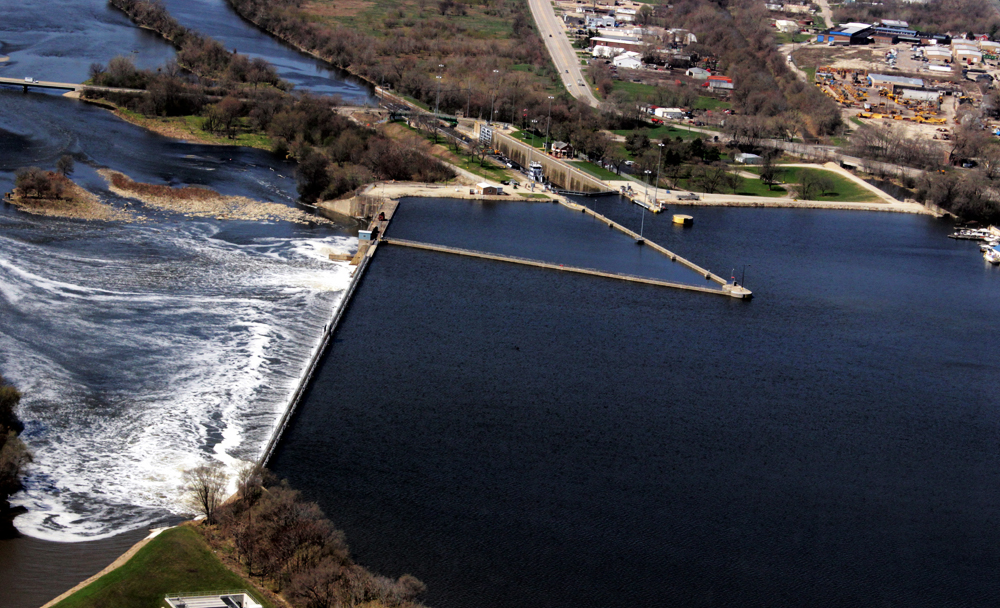
Action on long-term solutions to prevent the carp from entering the Great Lakes is stalled as well. Last year, legislative efforts to authorize the Army Corps proposals were defeated in Congress. A federal appeals court, moreover, dismissed a lawsuit from the Great Lakes states seeking to force hydrological separation of the two basins. Neither Congress or the court could agree on whether separation should happen at all, how it should be achieved, and how much it should cost.
“Consensus from stakeholders that are interested and concerned about those long-term solutions is the essential missing ingredient,” said Eder. “There is not a consensus on what the long-term solution should look like.”
Stakeholders Make Slow Progress On Great Lakes Separation Agreement
Two primary policy pathways could produce the hydrological separation of the Great Lakes and Mississippi River basins. The first would require the Army Corps to choose one of the proposals contained in its 2014 study, complete further feasibility and cost analyses, then submit the plan to Congress for approval and funding. The second would require Congress to choose a plan and order the Army Corps to complete it.
A committee of stakeholders including fishing, commerce, and environmental interest groups—convened and mediated by the Great Lakes Commission—began addressing plans for hydrological separation last year. The biggest opponent of complete separation is the transportation industry, which ships about 15 million tons of commodities through Chicago waterways each year. The Army Corps study estimated that hydrological separation could cost the commercial cargo industry between $US 210 million and $US 250 million annually, depending on the option implemented.
–Congresswoman Candice Miller
R-Michigan
“It’s a very diverse group with strong opinions on both sides of the questions, so it’s a real challenge to come to consensus on what that long-term solution should look like,” Eder said. “But this [advisory committee forum] is the best chance we have of arriving at the solution.”
Eder said the group is making progress and is on track to reach a decision by the end of the year.
Legislation Proposes Short-Term Solution to Stop Asian Carp
Complete hydrological separation, however, will require at least 25 years to construct, according to the Army Corps study. In the meantime, Great Lakes states and conservation groups are focusing their attention on interim technology to slow the spread of invasive species through the Chicago waterways.
The Defending Our Great Lakes Act introduced last month by Congresswoman Candice Miller (R-MI) in the House, and Senator Debbie Stabenow (D-MI) in the Senate, would put those technologies in place at the Brand Road Lock and Dam. For example, the legislation would allow the Army Corps to install electric barriers, carbon dioxide bubble screens, underwater sound canons, and pheromones to deter Asian carp from moving upstream. In December, the Corps began studying which of these technologies would be the most effective.
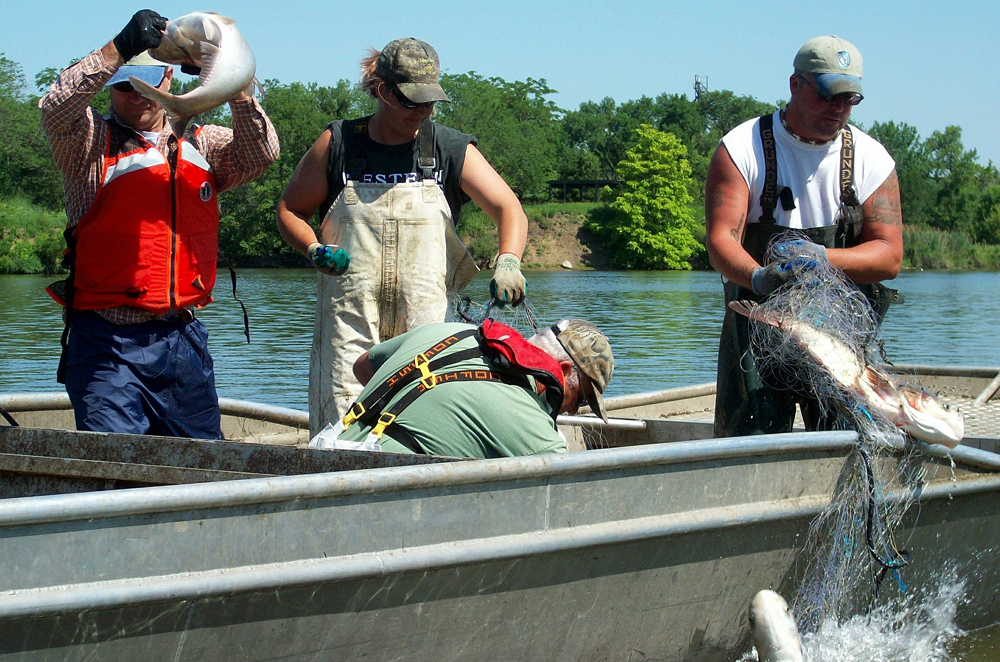
“While not as foolproof as hydrologic separation, which I still believe is the ultimate solution, this option will be effective. With its bipartisan, bicameral support, I am hopeful we can get it passed,” Representative Miller wrote in a statement to Circle of Blue.
Miller, who introduced a bill to authorize complete separation that was defeated last year, said that funding and commerce are the two largest challenges to stopping Asian carp from invading the Great Lakes.
–Jennifer Caddick
Engagement Director,
Alliance for the Great Lakes
“Complete hydrologic separation is estimated to cost $18 billion,” she wrote. “The improvements and additions to Brandon Road Lock and Dam included in this new legislation are estimated to cost between $300 to $400 million. Additionally, there is a significant amount of commerce that travels through this system. We need to make sure that, whatever is done, there is adequate infrastructure there to continue to facilitate commerce.”
While the legislation does not authorize hydrological separation, it does require the Army Corps to work with regional agencies and interest groups to prevent the spread of invasive species and report to Congress every year.
“[This legislation] is really important because it authorizes the implementation of some immediate risk reduction measures, but also requires the Army Corps and other federal agencies to keep an eye on the long-term permanent solution needed to keep carp and other invasive species out of the Great Lakes,” Jennifer Caddick, engagement director at the Chicago-based Alliance for the Great Lakes, told Circle of Blue. “That’s an important piece—making sure we can get immediate risk reduction measures in place.”
A news correspondent for Circle of Blue based out of Hawaii. She writes The Stream, Circle of Blue’s daily digest of international water news trends. Her interests include food security, ecology and the Great Lakes.
Contact Codi Kozacek





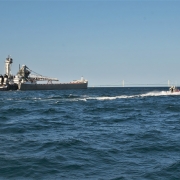
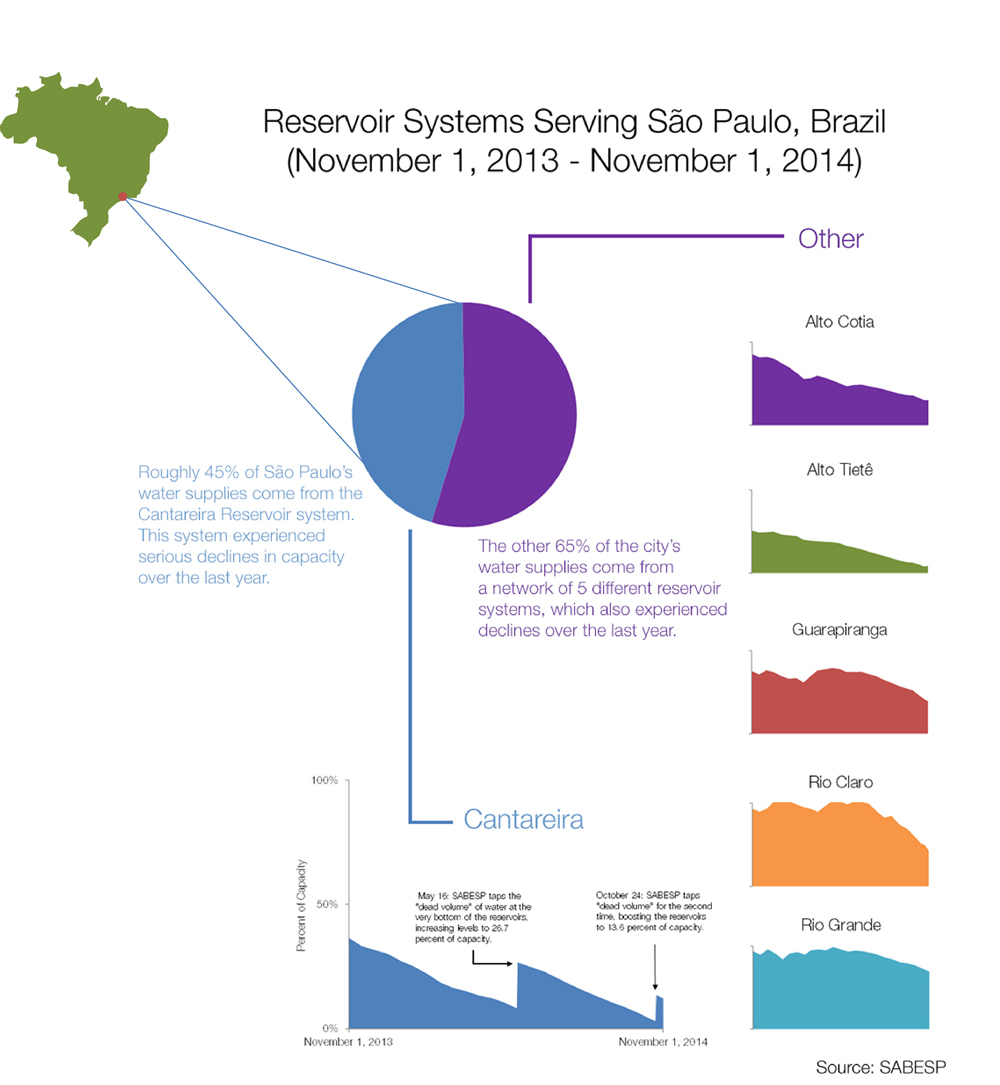


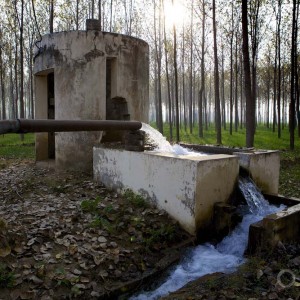
Build all the barriers you want, let us restore native fish predators Perch walleye Etc… Just in case things don’t work with the barriers. I hate to think we’re doing all this to protect the alewives, it’s the same as keeping billions of baby asian carp!
I thought the Asian carp had made it all the way to the White House!
Tom, stop with your lies about how “native predators” will stop Asian carp. They won’t and you know it.
For less than half the cost of this ($15 billion) they could put a bounty on the Asian Carp…let’s just say, $25 a fish…then watch the fisherman empty the rivers of these pests, and dry up the population! Hell, I’d do it! Watch me come in with a truckload of these things and feed my family!
C’mon people. The entire great lakes basin is at risk of yet another invasive species. Everybody knows that it will take federal dollars,(our dollars), to effect a viable solution. All the big players have their hands out in the process. This regime will reward its friends and punish its enemies.
Michigan and Wisconsin, being red states, will not see not any support from Wa$hington. Do you really think obeyme will do anything to aggravate his home base? Get Real.
I grew up on the Susquehanna River and in the late 70’s and early ’80s. At that time the river was teaming with yellow carp. Shortly thereafter, the NYS DEC stocked the river with norlunge….a northern pike-muskie hybrid. Within a few years after stocking, there were hardly any carp.
why not catch as many carp and use it for either human food or at least fish meal and fish oil.
this would kill two birds with one stone–
1-reduce the number of carp dramatically
2-save the menhaden and other small ocean fish from overfishing and let them feed the whales etc.
Tom, these actions seem to coincide with better direction towards finding a permanent solution. Put up the electrical barriers, find the choke points, cut costs and increase effectiveness. Since a hydrological separation of the Great Lakes from the Mississippi River is not an ecological separation, a hydrological separation would be a bad idea. You people have a better idea on how to approach the problem on a permanent basis. Since there doesn’t seem to be enough profit in commercially harvesting them, I’m interested in what natural predators are available and where. It’s a shame, there are five species of carp that I know of in the Mississippi, and every one of them is invasive.
Native predators will work, the common carp studies and invasive white perch studies all predicted what’s happening now. In short if you remove the carp or any invasive species whether netting poison etc.. and you don’t plant/stock predators your just making it easier for the remaining Asian Carp to refill the hole you just made, increase even. They’re netting out pounds the Asian Carp are increasing by fish! The latest spawn June 2015 asiancarp.us sampling was “Asian Carp as far as you could see” can’t poison them might pollute St. Louis (chapman) can’t do anything but watch them spawn. Without predators they grow faster and safer, with predators they do not, the lakes biomass becomes the control. We are not in danger of too many native fish!